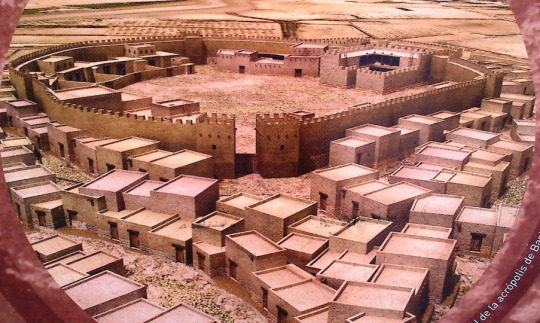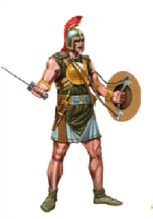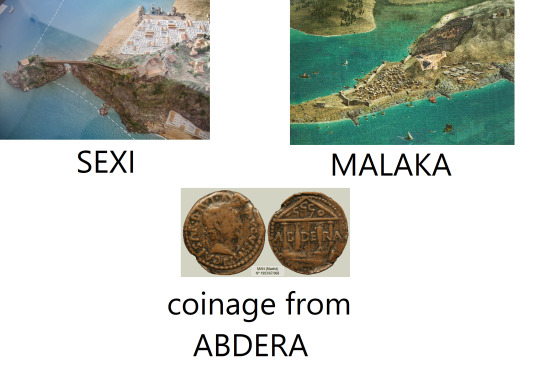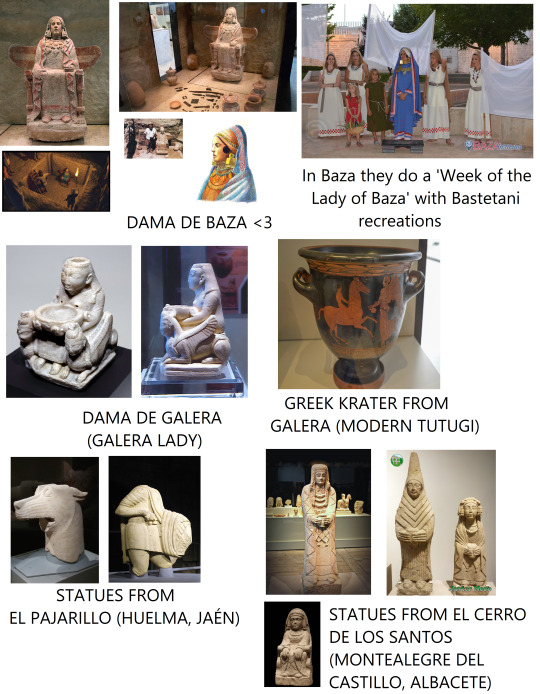#forgot the name of fuck but that is in albacete and i believe is oretani?
Explore tagged Tumblr posts
Text
BASTETANI


(recreation of Basti, capital of the Bastetania, and a Bastetan warrior)
The Bastetani were an Iberic group that lived in more or less all Eastern Andalusia, plus part of Murcia and Albacete. There's evidence of them as early as the 5th century BC, due to some Greek kratera found in a necropolis in Basti (modern Baza, Granada), which was the main oppidum or settlement in the area. It was a highly orientalized area due to its contact with the Phoenician cities in the coast, which are called Bastetan-Phoenician (Sexi, Malaka and Abdera among others).

The territory was divided into fortified pseudo city-states that controlled the roads, plus some extra-urban sanctuaries consisting of empty lots with accumulations of a particular type of vase, probably to make libations. There are also traces of mining operations throughout the territory, as it was an integral part of their economy, apart from garum (salted fish) and esparto. Apart from Basti, other major settlements were Iliberri (Granada), Tutugi (Galera, Granada), and Ilurco (near Pinos Puente, Granada).

There is a very rich archaeological history in Bastetania, but its most important and well-known finding that constitutes a symbol of the whole region even to this day is the Dama de Baza (Lady of Baza) a polychrome and incredibly detailed funerary statue. What's interesting about it is that the ashes of the corresponding tomb were inside the statue, acting as a funerary urn, and the dowry was almost exclusively made of swords and other weapons. Based on that, archaeologists first assumed that the statue represented a Goddess and that the ashes were of an important male warrior, but later on it was discovered that the ashes corresponded to a female body. The most accepted theory right now (although this is still very polemic) is that the statue was of the deceased, and that she could have been a powerful woman in the oppidum, either a high priestess or the equivalent to a queen. Below you'll find pictures of it and more Bastetani archaeological findings, as you can see the oriental influence is very present in its statuary catalogue:

All of the Bastetani territory became part of the Hispania Ulterior province between 190 and 179 BC with Tiberius Sempronius Gracchus' campaign.
#typicalspanish#history#ancient history#iberia#prerroman history#bastetani#spanish history#thinking about the fact that my grandfather is from this area and he makes baskets and other objects out of esparto just as his ancestors#probably did#also once again the iberic art is so underrated#like look at the dama de baza and the dama de galera and the statues from el cerro de los santos!!!#also the el pajarillo statues are so fucking incredible and we studied them in class because apart from this one cool structure i just#forgot the name of fuck but that is in albacete and i believe is oretani?#they're the main evidence of this iberic myth of a hero doing all these heroic stuff#and one of them has been interpreted as slaying a big bad wolf™#which would be what's represented in the el pajarillo statues
10 notes
·
View notes